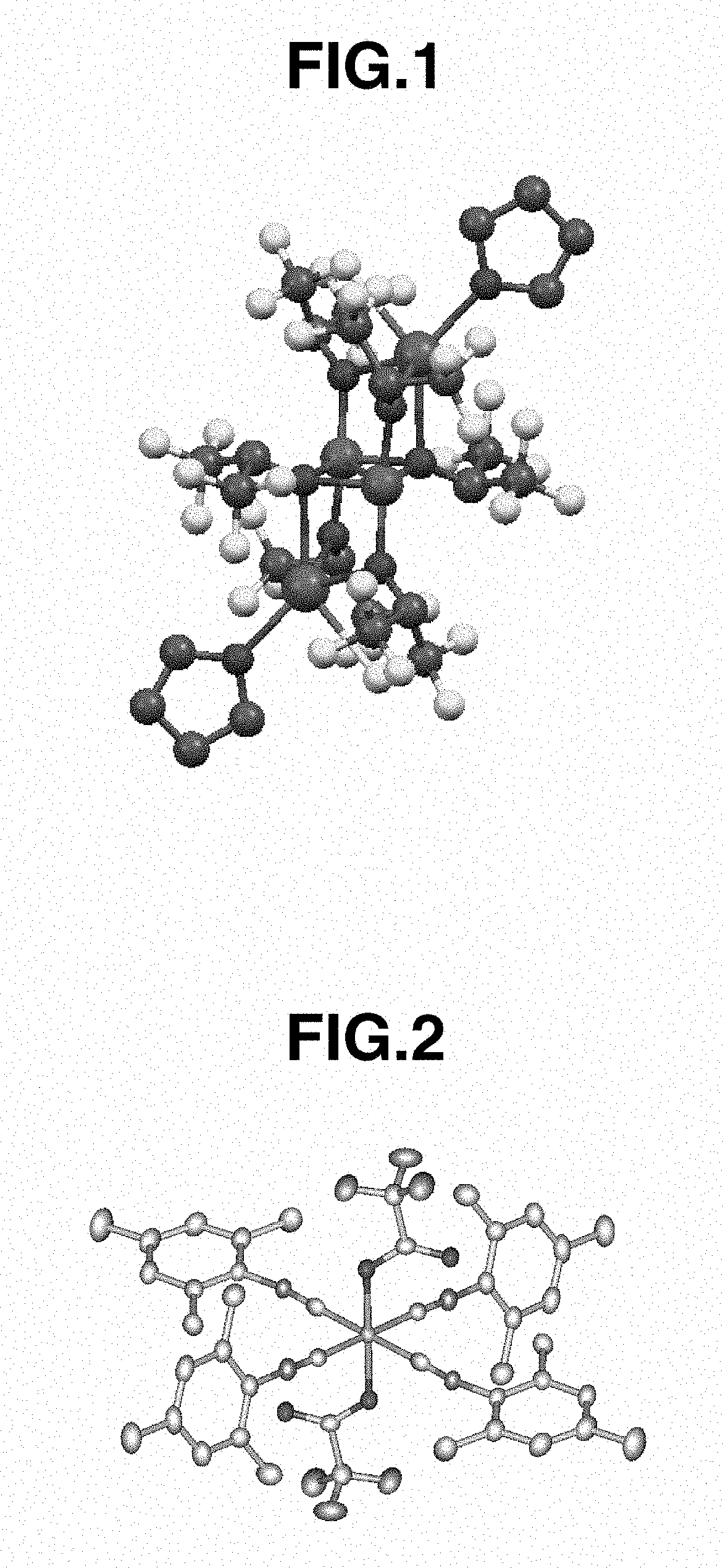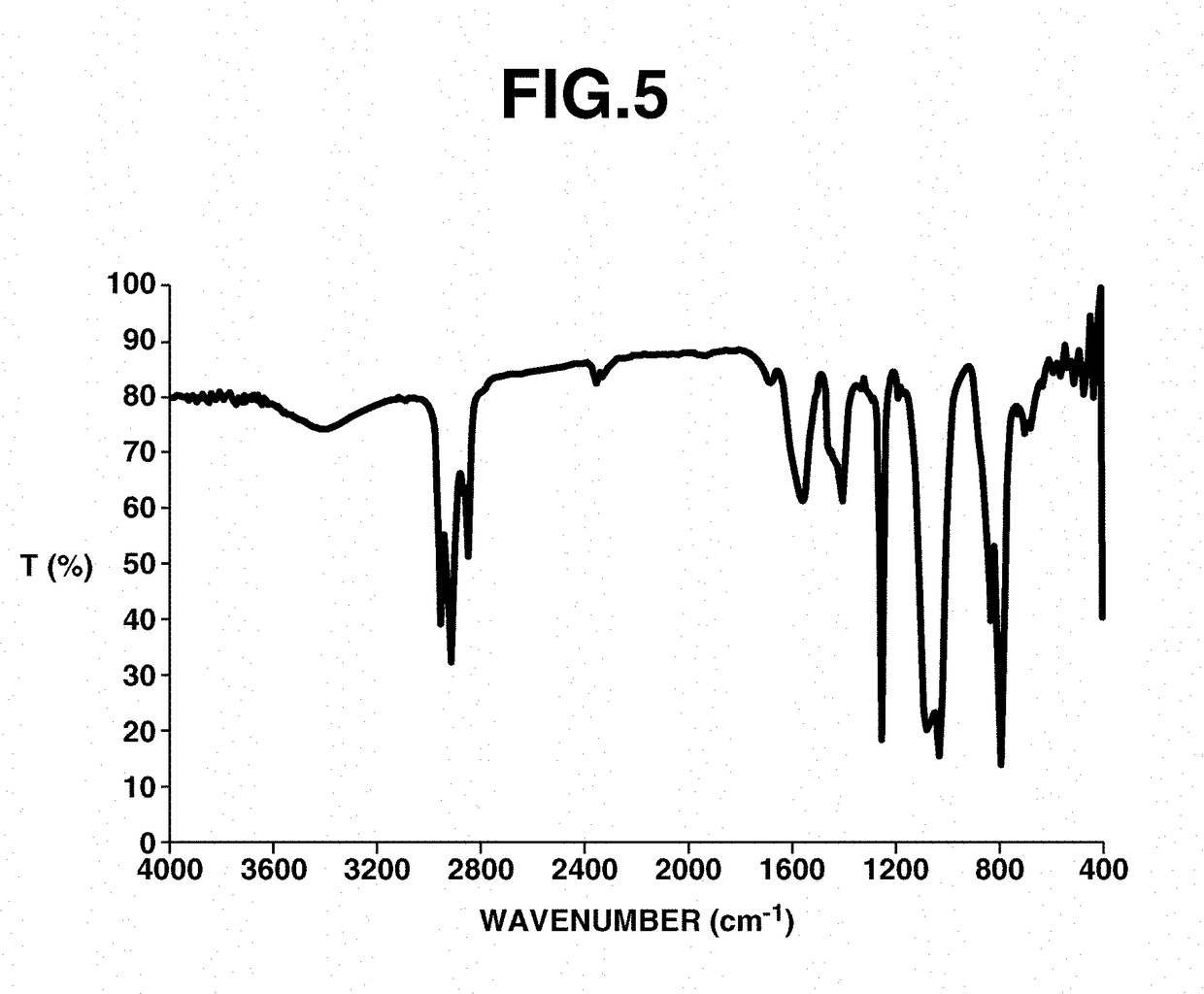Hydrosilylation reaction catalyst
a reaction catalyst and hydrogen bonding technology, applied in the direction of organic compounds/hydrides/coordination complex catalysts, physical/chemical process catalysts, organic chemistry, etc., can solve the problems of side reaction due to internal rearrangement of olefin, low selectivity of - and -adducts, and all the center metals pt, pd and rh are quite expensive noble metal elements. , the effect of high reactivity and high storag
- Summary
- Abstract
- Description
- Claims
- Application Information
AI Technical Summary
Benefits of technology
Problems solved by technology
Method used
Image
Examples
examples
[0168]Synthesis Examples, Examples and Comparative Examples are given below by way of illustration and not by way of limitation.
[0169]All solvents were deoxygenated and dehydrated by well-known methods before they were used in the preparation of metal compounds.
[0170]The metal compounds obtained were stored in a nitrogen gas atmosphere at 25° C. before they were used in reaction.
[0171]Hydrosilylation reaction and solvent purification of alkenes were always carried out in an inert gas atmosphere. The solvents and other ingredients were purified, dried and deoxygenated by well-known methods before they were used in various reactions.
[0172]Analyses of 1H, 13C and 15F-NMR spectroscopy were performed by JNM-ECA 600 and JNM-LA 400 of JEOL Ltd., IR spectroscopy by FT / IR-550 of JASCO Corp., elemental analysis by 2400II / CHN of Perkin Elmer, x-ray crystallography analysis by VariMax (MoK α-ray 0.71069 angstrom) of Rigaku Corp.
[0173]It is understood that hydrogen atoms are omitted from the che...
synthesis example 7
[Synthesis Example 7] Synthesis of Iron Complex A
[0194]A 100 mL two-neck recovery flask with a stirrer was charged with 550 mg (12.6 mmol) of NaH (55%) in paraffin and 20 mL of diethyl ether, and cooled down to 0° C. To the flask, 2.50 mL (24.1 mmol) of 1,1,1,3,3,3-hexafluoroisopropanol was slowly added dropwise, followed by stirring at 25° C. for 1 hour. Thereafter, the reaction product was dried in vacuum and washed 3 times with hexane, obtaining 2.45 g of sodium 1,1,1,3,3,3-hexafluoroisopropoxide (abbreviated as NaHFIP, hereinafter).
[0195]In a nitrogen-blanketed glove box, 0.10 g (0.79 mmol) of FeCl2 and 5 mL of toluene were added to a screw-top vial with a stirrer. A solution of 0.33 g (1.71 mmol) of NaHFIP in 1 mL of THF was added dropwise to the vial, followed by stirring at 25° C. for 1 week. Thereafter, the solid was removed by centrifugation, and the reaction product was recrystallized at −30° C., obtaining iron complex A (78 mg, yield 15%). The result of x-ray crystallogra...
example 1
[Example 1] Hydrosilylation Reaction Using Iron Acetate and 1-Isocyanoadamantane
[0196]A 20 mL Schlenk flask was charged with 5 mg (0.03 mmol) of iron acetate (commercial product) as a catalyst precursor, 10 mg (0.06 mmol) of 1-isocyanoadamantane as a ligand, and 254 μL (1.3 mmol) of 1,1,3,3,3-pentamethyldisiloxane, which were stirred at 80° C. for 1 hour to activate the catalyst.
[0197]After cooling, 115 μL (1.0 mmol) of styrene as a substrate was added, followed again by stirring at 80° C. for 3 hours. After cooling, 1.0 mmol of anisole as an internal standard was added to the reaction solution and stirred. A minute amount of the solution was dissolved in deuteronchloroform, passed through an alumina column to remove the catalyst, and analyzed by 1H-NMR spectroscopy to determine the structure and yield of the product. (It is noted that in the following Examples, a test sample was prepared according to the same procedure and analyzed by 1H-NMR spectroscopy.)
[0198]As a result, it was ...
PUM
 Login to View More
Login to View More Abstract
Description
Claims
Application Information
 Login to View More
Login to View More - R&D
- Intellectual Property
- Life Sciences
- Materials
- Tech Scout
- Unparalleled Data Quality
- Higher Quality Content
- 60% Fewer Hallucinations
Browse by: Latest US Patents, China's latest patents, Technical Efficacy Thesaurus, Application Domain, Technology Topic, Popular Technical Reports.
© 2025 PatSnap. All rights reserved.Legal|Privacy policy|Modern Slavery Act Transparency Statement|Sitemap|About US| Contact US: help@patsnap.com



